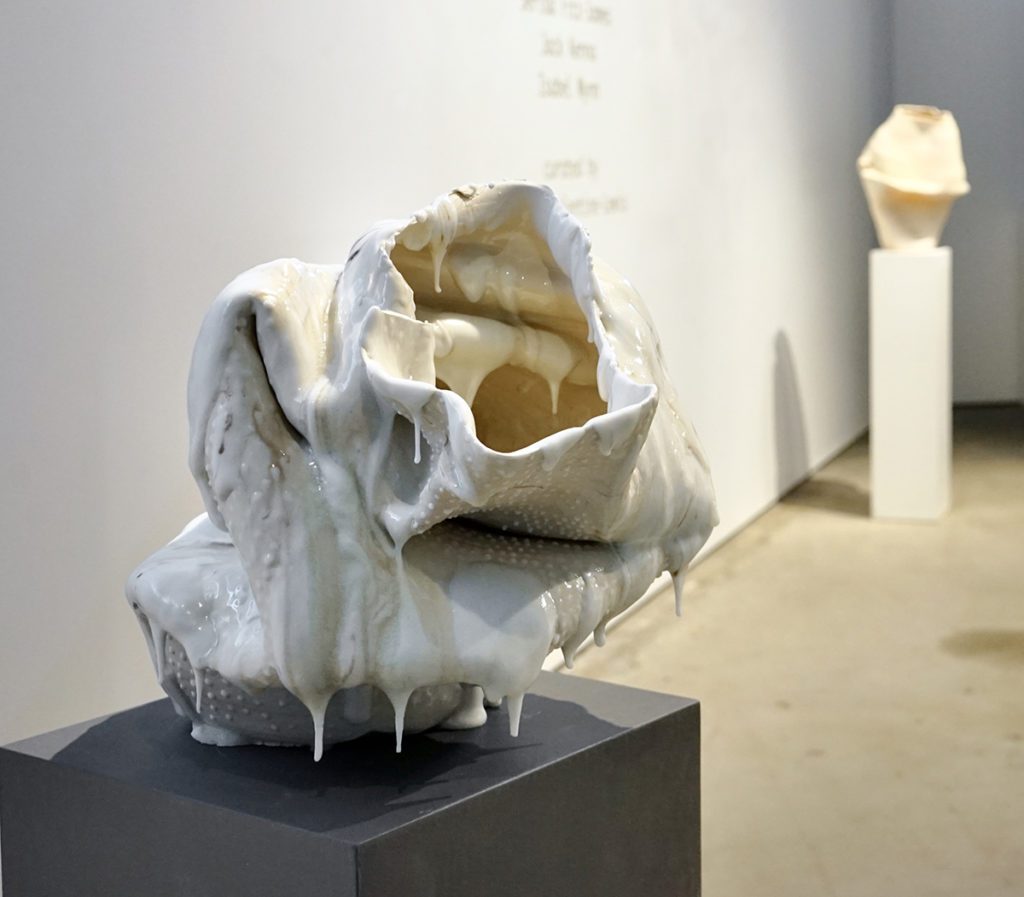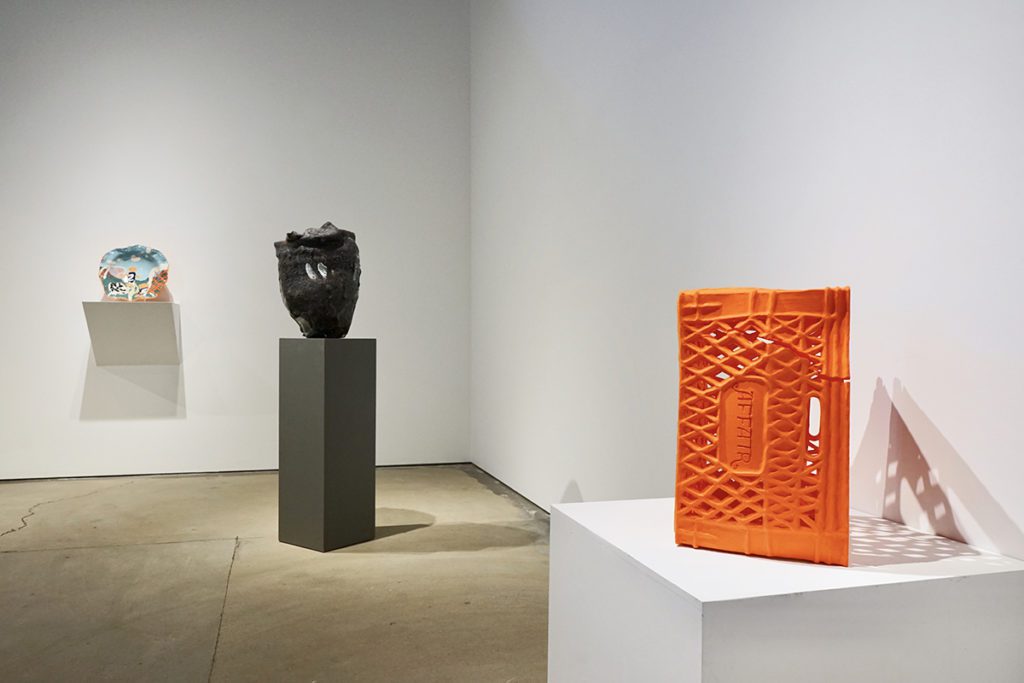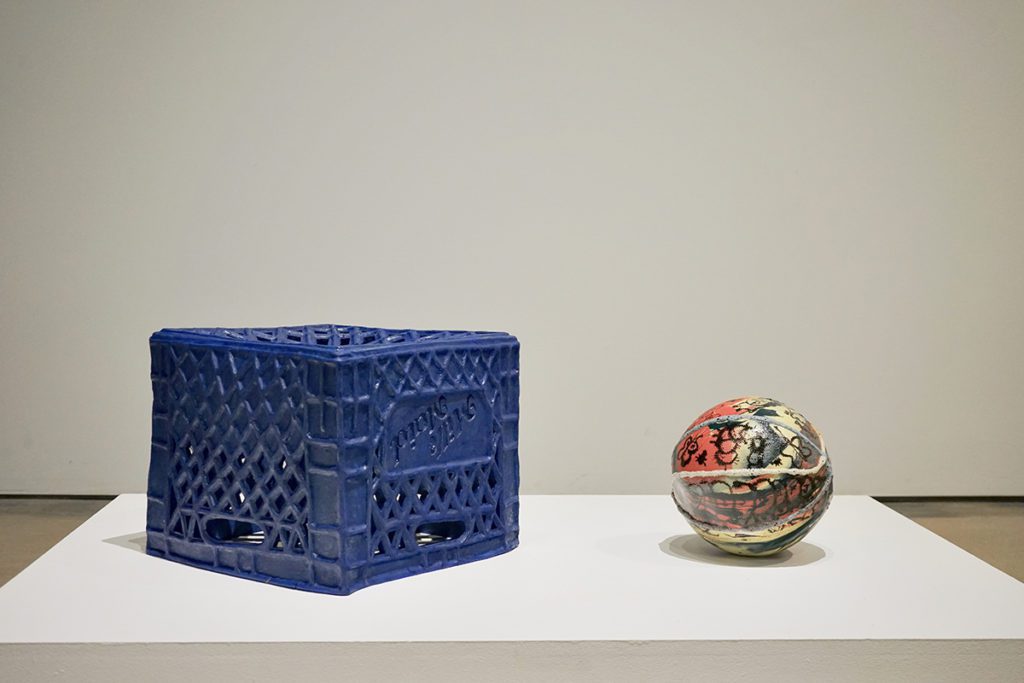Amongst our Contemporary Ruins: future relics of our time at Equinox Gallery
14 September 2022By Lauren Lavery

Yesterday afternoon my usual commute home was interrupted by a surprise flat on my bike’s rear tire. Along the route from the downtown office to my apartment, there are three sites of open excavation—one a literal pit, which is to be the future location of a new subway station near the local art university. At this particular spot, the usual protocol of a primary coloured, temporary rental fence has been swapped for a more permanent plywood installation, complete with pre-painted information and cut-outs to see what’s happening in the ever deepening, vast cavity bored into the earth below. As I peer through the holes in the plywood to inquire after the progress, the most alluring objects to catch my eye are the brightly coloured debris littering the edges of the worksite. Everything from cherry red Tim Horton’s coffee cups, to the iridescent wrappers of granola bars, to bright white styrofoam takeout containers riddle the area, and are tangled amongst discarded chunks of dried cement and other construction materials. My thoughts immediately jump to how the majority of our contemporary infrastructure is built on a bed of non-biodegradable garbage, eternally preserved for the future generations to discover—what a legacy to leave beneath the impressive glass monoliths erected across this city with extraordinary speed.
The exhibition aptly titled future relics of our time at Equinox Gallery in Vancouver showed similarly “reliquary” works that investigated the notion of the relic as an object defined as “that which is left behind,”1 thus questioning the kind of legacies which will be left behind by contemporary life. Interestingly enough, the works in the exhibition were all ceramic, a rarity to be seen in an art world that generally likes to demote the material from the world of fine art to the realm of “craft.” Curated by Andrea Valentine-Lewis, the show thoughtfully brought together pieces from Serisa Fitz-James, Jack Kenna and Isabel Wynn, each of whom exhibited an experimental approach to both the medium and the conceptual aspects, challenging the viewer to reconsider what it means to create imperfection in clay.

Massive, goopy drips of solidified glaze defined essentially all of Wynn’s contributions, and in combination with the wheel-thrown forms folded onto themselves like a deflated bouncy castle, the energy emanating from these pieces countered usual expectations of perfectly formed vessels. In fact, many of the pieces in the exhibition contradicted usability, or, like Kenna’s ceramic milk crates, were turned sideways or upside-down, rendering them useless except to squat on for a momentary rest. Out of all of the pieces, it was Fitz-James’ contributions that felt the most unique and relic-worthy: a football with the top cut off, a graffiti-riddled basketball and a deformed plate with an amateurly painted scene of two people playing soccer held their own on plinths and shelves across the gallery. The extreme thinness of some of the edges felt especially dangerous, and I found myself with the desire to run a bare fingertip across the surface, waiting for a deep sliver to form like Sleeping Beauty touching the spindle of a spinning wheel. Regardless of their use-value or technical “quality,” all of the works exhibited some kind of deformity—or perhaps what we were witnessing was a kind of fast-tracked deterioration of their former perfect selves?

If a relic refers to an object of religious significance, and in Christian belief an object specifically belonging to martyrs, then a potsherd2 represents a kind of materiality that transcends a single chemical makeup. The patron saint of potters himself, Saint Spyridon, reportedly held a potsherd in his hand, which then burst into flame, dripped into water through his fingers, and all that remained in his hand of the clay became dust.3 This dazzling act symbolized the fact that the material is simultaneously of three elements, a metaphor for its likeness to the holy trinity. If we are to confirm the belief that to work with clay is to be closer to a higher, divine being, then relating the works in future relics of our time only foreshadows the misshapen and abject nature of the existence we are leaving for future generations. As I finally step away from the peephole in the fence that proudly exhibits the giant hole full of non-biodegradable debris of our late-stage capitalist landscape, I wonder who the patron saint of the gnarled plastic cup will be, and what fantastic trick they will perform to demonstrate the environmental missteps of our contemporary age.
- From the exhibition brochure, https://www.equinoxgallery.com/wp-content/uploads/2022/02/Relics2022_PR_.pdf
- Specifically relating to a ceramic fragment within an archaeological framework.
- https://en.wikipedia.org/wiki/Saint_Spyridon
future relics of our time ran from February 19 – March 19, 2022 at Equinox Gallery in Vancouver, BC.
Feature Image: (left to right) Milk Maid, 2022 by Jack Kenna; Ball 6, 2020 by Serisa Fitz-James. Photo by Lulu Zhang courtesy of Equinox Gallery.



